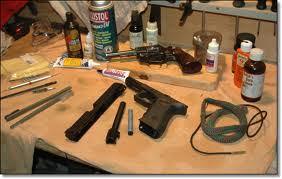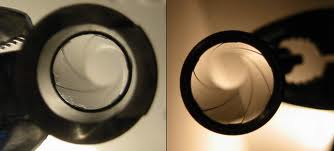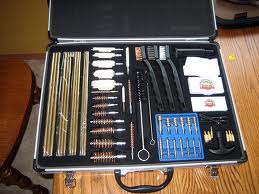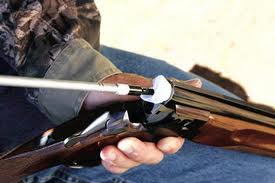Now that the Holidays have passed and most of the hunting seasons have ended, have you prepared your guns for storage? Here are some suggestions that I use for cleaning and storing my guns when not in use.
CLEANING:
First, make sure you firearm is UNLOADED. It is amazing how many accidents occur when gun owners are careless when cleaning their firearms. I suggest that you check, recheck, and then check a 3rd time before you start the cleaning process. One cannot ever be too safe when handling a firearm.

After you are sure that your gun is safe, then you should disassemble the gun as recommended in the owner’s manual. Some examples would be removing the barrel (s) from your shotgun, the bolt from your rifle, or disassembling your semi-auto pistol. There is little disassembly required with revolvers, nor is there much need to do so.

Occasionally, one might want to remove the cylinder on a double action for a more thorough cleaning and lubrication, but this is not an operation that needs to be done with each cleaning. Do remove the cylinder on your single action revolver.

You will need a good cleaning rod, I prefer brass or some of the new carbon fiber models. A caliber or gauge specific bronze brush and matching jag. Good quality cleaning patches won’t leave a bunch of lint in your gun. As for solvents, I have found the new foaming cleaners are really effective; I prefer Gunslick. I also use the wonderful Hoppe’s No. 9 solvent. Fill the barrel on your gun, and the chambers on a revolver with the foam. I suggest you allow it to work for at least ½ hour or a little longer. While the foam works on the barrel, you can clean the receiver, bolt, slide, or other various parts of your gun. Don’t forget the stock; Lemon oil extract does a wonderful job on wood stocks.

Starting from the breach end of the barrel, run the bronze brush all the way through the barrel and back at least 10 times. After that, run some solvent soaked patches through the bore followed by a couple of clean dry patches. When the dry patches come out clean, then finish cleaning all the nooks and crannies on your gun. Q-tips and dental picks make this job easier. If you use a rod, you will have to start from the muzzle end of your revolver; be very careful not to mar the crown. Some new flexible cleaning rods such as Otis or Bore Snake allow you to start from the breach and are worth a look.
Finally, lubricate your gun in accordance with the owner’s manual specifications. DON’T over lubricate. Excess oil will attract dirt and lint. If you plan to store you gun for a long period, run an oiled patch through the bore and lightly oil any parts that are in the white (unblued).
STORAGE:
Don’t store you gun in a case; moisture can accumulate and cause rusting and corrosion. If you have a gun safe, make sure you take precautions against condensation. Ideally your safe will have an outlet for an electric dehumidifier. Remember to store your guns so that they are not accessible to unauthorized persons, both children and adults. Storage requirements will vary for everyone, but gun ownership responsibilities are the same for all.
If you follow these few tips, your guns will last several lifetimes.
Be safe and good shooting.
Colonel Smoothbore
www.guncoach.net